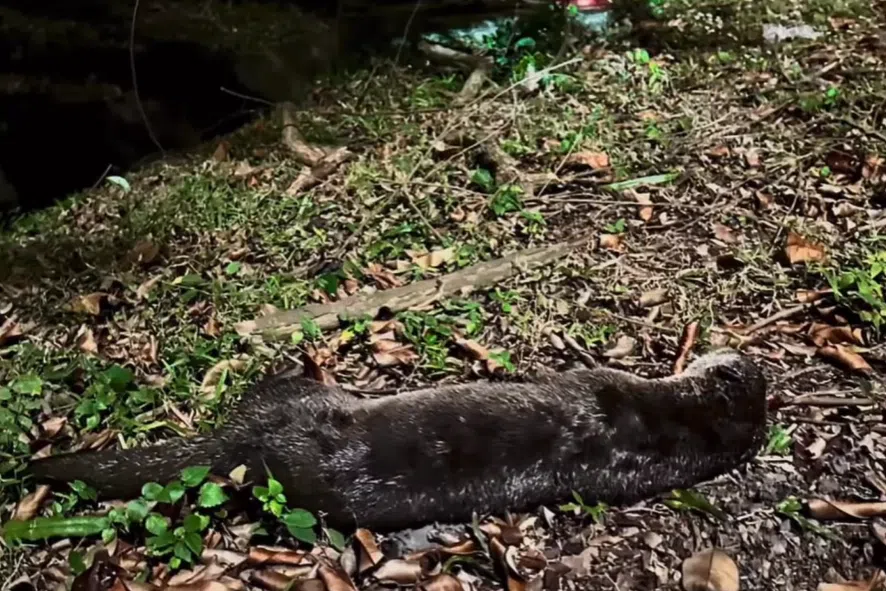Otter killed in suspected accident with vehicle on AYE
Sign up now: Get ST's newsletters delivered to your inbox

The otter died while a good Samaritan, who was driving by, was calling for help.
PHOTO: SCREENGRAB FROM MARCUS LEE/FACEBOOK
Follow topic:
SINGAPORE – An injured otter was found on the AYE early on Oct 10 in a suspected accident with a vehicle, and it later died.
In a dashcam video of the incident posted to the Facebook page of Singapore Wildlife Sightings, the otter is seen lying in the middle lane of the expressway, surrounded by five other otters.
As the car with the dashcam approaches, the five otters scurry away to the central divider.
Mr Marcus Lee, who posted the video, said in the post that the injured otter was “writhing in pain and bleeding” when he arrived. He added that the other otters were making sounds of distress.
In the dashcam footage, a man believed to be Mr Lee is seen picking up the injured otter and carrying it to the left side of the expressway. As this is happening, the otters at the central divider can be seen peeking out from the bushes.
Blood stains can be seen on the road where the injured otter lay.
Mr Lee said in the post that the otter died while he was calling for help.
In another cut of the video, the otters at the central divider can be seen running across the expressway and dodging passing vehicles to get to where the dead otter was.
In superimposed text on the video, Mr Lee said he carried the dead otter to the other otters for their “final goodbyes”.
“I moved the body of the otter onto the grass farther beyond the barricade, and backed off to allow the surviving family to spend some time with the body of their deceased member, before burying it under a tree after they had moved away,” he said in the Facebook post.
Mr How Choon Beng, the National Parks Board’s group director of wildlife management, said the agency was alerted to the accident at around 10am. The otter was identified as a smooth-coated otter – one of the two species found in Singapore.
“The otter was found dead when the NParks team arrived at the site, and the carcass has since been removed and sent to Mandai Wildlife Group for a post-mortem examination,” Mr How said in a statement.
He urged motorists to be vigilant for animals crossing roads flanked by forested areas, especially in locations with signs indicating such crossings.
He also reminded members of the public not to handle injured wild animals on their own. Those who urgently need to report wildlife requiring rescue can contact NParks’ 24-hour Animal Response Centre on 1800-476-1600, said Mr How.
In response to a media query, the Animal Concerns Research and Education Society (Acres) said it appreciated Mr Lee for rendering assistance to the otter.
“His considerate actions may have prevented the rest of the otter family from being hit as well,” said the animal welfare group, noting that the motorist who initially hit the otter did not stop to help.
“We strongly urge all drivers to act responsibly in similar situations,” it added.
Acres said roadkill remains a significant issue here, as continued urbanisation forces more animals to cross roads between fragmented habitats, increasing their risk of being struck by vehicles.
“It is sad and unfortunate that yet another wild animal has lost its life in a roadkill incident in Singapore,” it said.
Acres advised motorists who encounter wildlife on the road, or who witness an accident involving an animal, to find a safe place to stop their vehicle.
They should avoid approaching the animal directly as injured wild animals may react defensively.
If possible, motorists should take photos or videos of the incident and note the exact location, before calling the relevant agencies for assistance.


